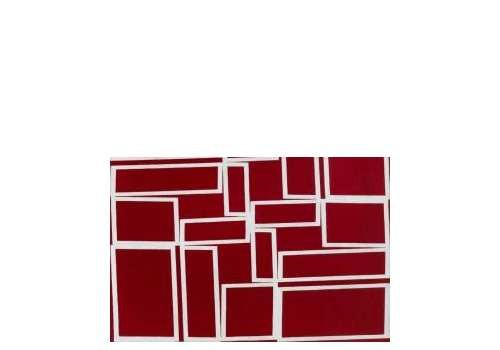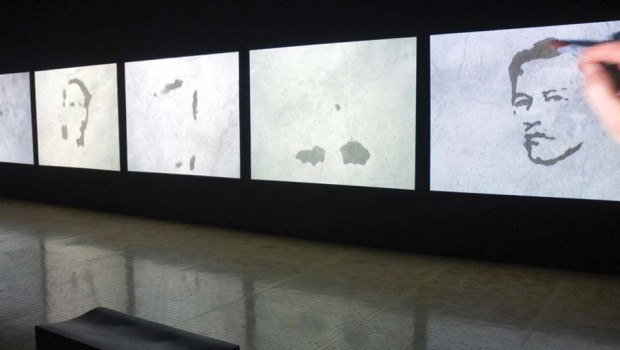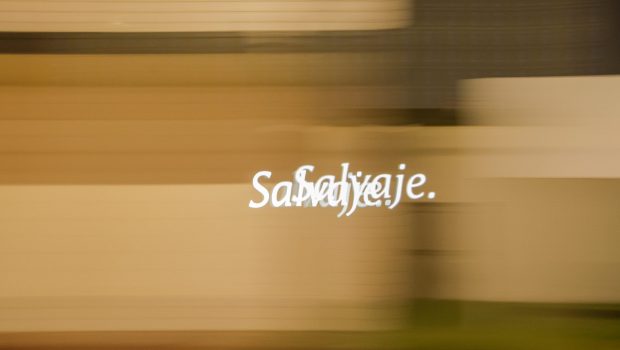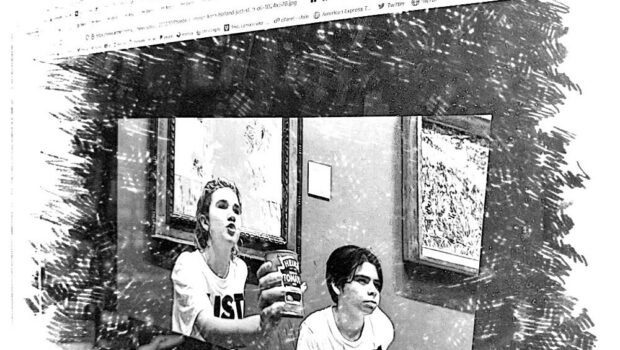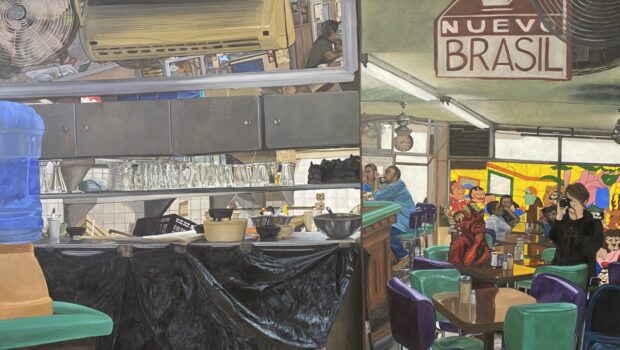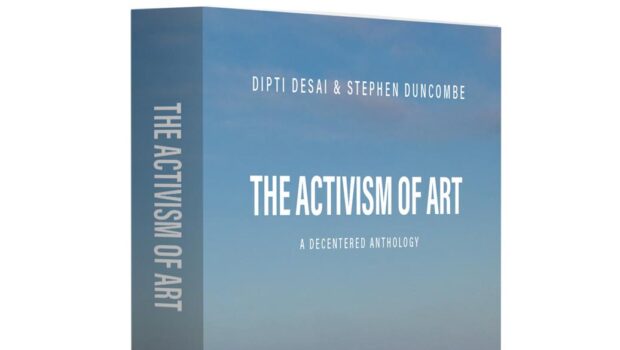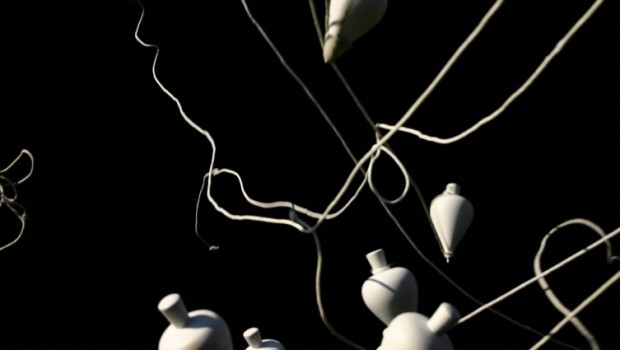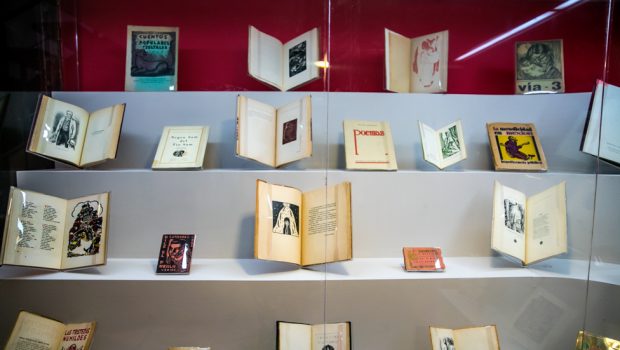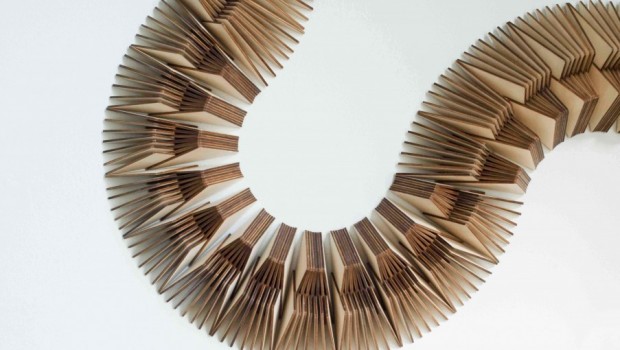Pictures at an Exhibition, Constructed Dialogs
Fernando Castro R.
This fall the Museum of Fine Arts is featuring an exhibition with the long title of Constructed Dialogues: Concrete, Geometric, and Kinetic Art from the Latin American Art Collection. It bears the curatorial seal of Mari Carmen Ramírez, Wortham Curator of Latin American Art. The exhibit is a quiet distillation of other exhibits with which Ms. Ramírez has regaled us in the past few years: from the grandiose Inverted Utopias in 2004, to the subtle Gego: Between Transparency and the Invisible in 2005, the extravagant Helio Oiticica: The Body of Color in 2007, and the tour-de-force of Carlos Cruz-Diez: Color in Space and TIme in 2010.
We can tour the exhibition following its long title. The exhibition is displayed so that it starts with the influence of Constructivism. To the layman “Constructivism” may sound like something for which you need to wear a hard-hat, but the origins of Constructivism in art go back to the early years of the Bolshevik Revolution in Russia. It was a movement that sought to surrender the autonomy of the fine arts to the utilitarian arts of architecture and design, and to make art a constant in people’s daily life. The choice of the word “constructive” may very well have been meant to establish an ideological commitment to put art to the service of building a new society. It is ironic that the tenets of a movement that was to become largely abstract were spelled out in the Realistic Manifesto, (1920) by Naum Gabo and Antoine Pevsner.
No sooner had the movement been born than it underwent a schism over Vladimir Tatlin’s proposal for the Monument to the Third International (1919): a never-realized building that if constructed would have been taller than the Eiffel Tower. Today, we might compare it to Anish Kapoor’s ArcelorMittal Orbit (2012), a monument built in London for the last Olympics to which it bears a striking similarity. In 1919 Gabo and Pevsner regarded Tatlin’s tribute to modernity as a peculiar hybrid that was neither fully utilitarian nor artistic in the “spiritual” sense. A spirited spiritual argument was not the right one to put forth in a revolution committed to viewing the world in purely materialist terms. By the mid 1920s the aesthetic preferences of Bolshevism began to favor Socialist Realism. So it was not surprising that in 1928 Gabo would move to Germany to teach at the Bauhaus (literally, “the house of construction”). Gabo also established a relationship with the Dutch movement De Stijl (the style) of art and design. De Stijl did not shy from utilitarian design, or from ideals of spiritual harmony and order. Among De Stijl’s apostles were Piet Mondrian and Theo Van Doesburg, and it is with these two artists that Joaquin Torres-García worked in Paris circa 1930. Mondrian advocated pure abstraction and universality through the exclusive use of essential forms and primary colors.
In Paris, Torres-García and Michel Seuphor established a group of abstract artists under the name Cercle et Carré (circle and square). In 1930, they organized a landmark exhibition at Galerie 23 that included Constructive artists like Wassily Kandinsky, Piet Mondrian and Antoine Pevsner. Shortly after Torres-García went back to Uruguay in 1934, he created the Asociación de Arte Constructivo, whose magazine he named “Círculo y Cuadrado.”
The MFAH strategically displays works by members of Joaquín Torres-García’s workshop, La Escuela del Sur, at the start of the exhibition. The totemic wooden sculptures of Francisco Matto, reflect how Torres-García’s Altestil Constructivism evolved to include a modicum of figuration as forms and symbols of pre-Columbian cultures. We focus on Matto’s Caracol Grande (1985), one of his most simple wooden sculptures. It shows the geometric elegance of Constructivism as well as the simplicity of ancient Native-American representation. It is misguided to call this type of representation “primitive” since many pre-Columbian cultures had extremely sophisticated conventions of depiction.
Explaining the name of his workshop, Torres-García once stated, “I have named it “Escuela del Sur” because our final destination is the South.” In 1943, he drew Inverted America, to make a point that his aesthetic model is in the southern hemisphere, not in the northern one. One can also add that to place North America on top and South America at the bottom is an arbitrary but not accidental cartographic convention because in outer space there is no up or down. Moreover, Torres-García’s destination may have been the south, but his inclination was to adopt the ideas of Constructivism, an aesthetic movement that expresses the global process of modernity. His southern destination had a lot to do with finding Constructivist ideas for a modern style in the “abstractions” of pre-Columbian forms. This pre-Columbian inspiration was not peculiar to Torres-García but had exponents through out the continent. Some artists arrived at these forms and motifs via the abstract tradition, whereas others, like Fernando de Szyszlo, through Surrealism and non-constructivist abstraction.
Many of the Escuela del Sur disciples also had an urban inclination. We cannot forget that modern cities in the mid-century were less than a century old; some even younger. Artists were still vigorously reacting to the new city-way-of-life well into the 1950’s; arguably even today, although with greater pessimism. Julio Alpuy’s Construcción con hombre rojo (1945) is a sculptural wooden piece that cheerfully exemplifies the cramped spaces of the cities.
Kinetic art is simply defined as art that moves (literally, that is). Constructivism itself paved the way for the incorporation of light, electricity, and motors into artworks. Duke Ellington once said—“It’s most improbable that anyone will ever know exactly who is enjoying the shadow of whom.” So although some historians credit Marcel Duchamp’s Bicycle Wheel (1913) to be the first Kinetic sculpture, he is really a champion of Dada, a more iconoclastic art movement than Kinetic art. The heyday of Kinetic art was the 1950s and the 1960s. By this time, the idea of an abstract geometric art as an aesthetic corollary of the modern metropolis was fairly well expected. As it turns out, there are many Latin Americans who were part of the Parisian nucleus of artists dedicated to Kinetic and Op Art —the latter being more concerned with optical vibrations, illusions, and virtual movement. In 1960 some of these artists founded GRAV (Group de Recherche d”Art Visuel) in Paris. The group was interested in investigating light, color, optics, movement, and haptic phenomena in and for art objects. Many of them were connected with the Salon des Realités Nouvelles and the Galerie Denise René. Some Op and Kinetic artists in the current exhibit are Carlos Cruz-Diez, Luis Tomasello, Julio Le Parc, Jesús Rafael Soto, and Gregorio Vardánega. Vardánega’s Espaces chromatiques carrées en spiral (1968) is an interactive piece in which a spectacle of changing colors (red, blue, etc.) loops continually so that the viewer of this exhibit experiences a sequence of chromatic events imposed onto geometric forms.
Although the dialogue we have engaged here may be inconclusive, it is important to write a few words about the Concrete and Neo-Concrete art movements in Brazil. The catalyst for the establishment of Concrete art in Brazil was the 1950 exhibition of Swiss artist Max Bill at the then recently inaugurated Museu de Arte of São Paulo, and his successful presence at the first São Paulo Biennial the following year. Bill had been trained at the Bauhaus in Dessau and had been influenced by Theo Van Doesburg’s Manifesto of Concrete Art (1930). The term “Concrete art” comes from that manifesto, whose main tenet is to create works that are “objective” and independent of any symbolism or observed reality. In essence, it aimed to create non-figurative art that did not denote anything but itself. These artistic ideas found fertile ground in Brazil as they coincided with the prevailing ideas of modernization, industrialization and architectural renovation. As a result two enclaves of Concrete art appeared in Brazil. In 1952 the Grupo Ruptura was formed in São Paulo. It included artists in our exhibit like Luís Sacilotto and Geraldo de Barros. In Rio de Janeiro the Grupo Frente consolidated around abstract artist Ivan Serpa with an exhibition at the IBEU gallery (1954). Frente included artists like Lygia Clark and Hélio Oiticica. The work of these artists is abundantly present in the current exhibit.
Given the very different cultures of São Paulo and Rio de Janeiro, Ruptura and Frente were bound to collide. On the occasion of the 1ª Exposição Nacional de Arte Concreta that opened in São Paulo in 1956, members of Ruptura criticized Frente artists for their lack of structural rigor and for allowing lyrical expression to contaminate their art. The strict abidance of the Ruptura group to the principles of international Concrete art became too confining for the more eclectic Frente group. The schism led Ferreira Gullar to write the Manifesto Neoconcreto (1959) for the 1ª Exposição de Arte Neoconcreta at the Museu de Arte Moderna in Rio de Janeiro. In it Gullar objected to the “dangerous rationalistic extremism” of Concrete art and proposed to restore to art its existential, emotive and affective dimension. Moreover, Gullar articulated the idea that “we do not conceive a work of art as a ‘machine’ nor an ‘object’ but as a ‘quasi-body’.” To emphasize the Neoconcrete openness, Gullar stressed that Neoconcrete artists did not constitute a “grupo” ruled by dogmatic principles. Some of these artists like Ligia Clark and Helio Oiticica emphasized the importance of dynamism and an interactive physical engagement between art works and the public.
An outstanding Ligia Clark Neoconcrete sculptural piece in the exhibit exemplifies her commitment to interaction: Bicho (1962). It is a piece that the viewer may fold and unfold to achieve different configurations. Helio Oiticica’s sculptural yellow piece Relevo Espacial (1960) made of painted wood hangs from the wall is a peculiar mix of Arte Povera and Constructivism. From the Grupo Madí, there are some Rhod Rothfuss pieces with their recognizable albeit unusual frames, and minimal geometric designs that comply with the non-referential commitment of Concrete art.
Some individual pieces at the exhibition by artists who are not easily classifiable need to be mentioned. Such is the case of Gertrude Goldschmidt alias Gego. Her Reticulárea (1975) is an enigmatic stainless steel wire structure that hangs from the ceiling as if it were a “space trap.” Concetto spaziale, Attese (1962) by the founder of Spatialism, Lucio Fontana, is a slashed canvas that says more and shows less than the precepts of that movement may propose. It states an act of destruction —as is the dying of leaves in the fall— that ultimately becomes a process of daring renovation. These pictures at an exhibition may not have been meant for the piano, but they do have a recurring autumn melody.
Posted: January 11, 2013 at 6:36 pm


